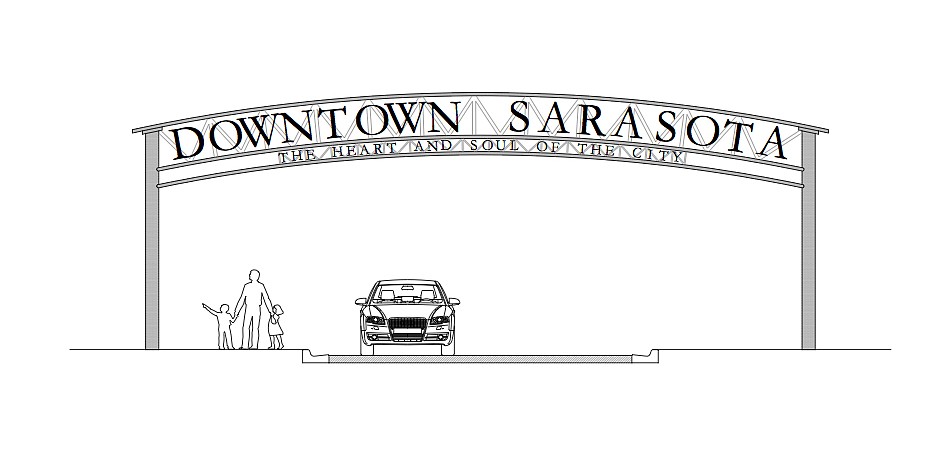- April 25, 2024
-
-
Loading

Loading

Do you have an idea for how to greet visitors to downtown Sarasota?
If so, you may soon have the opportunity to share your concept with city officials. Today, the Downtown Improvement District discussed the possibility of holding a design contest for a gateway sign near the intersection of Main Street and U.S. 41.
The board will decide at a future meeting whether to proceed with a project, the potential scope of which is still to be determined. But for more than five years, DID board members have expressed an interest in erecting a sign marking a key entrance to the heart of the city.
The board discussed the parameters of a design contest at its meeting today. DID Operations Manager John Moran crafted a preliminary call to designers based off similar city searches for artwork at the center of downtown roundabouts. The document seeks an original design for a sign that “draws viewers to it” but “should not create a distracting situation for drivers using the intersection.”
The preliminary guidelines give interested designers the opportunity to submit sign proposals of three different sizes, with maximum heights of 25 feet, 15 feet and 10 feet. Because the City Commission would have to approve any project, Moran said the DID wanted to collect a variety of options depending on what officials ultimately felt was appropriate for the location.
“I wanted to really build some flexibility in this thing,” Moran said.
Moran and DID Chairman Ron Soto discussed the possibility of erecting a gateway sign near the intersection at a December City Commission meeting. Soto noted commissioners had questions about the size and expense of any project, but they did not express opposition to the general concept.
“We didn’t get a lot of resistance on it,” Soto said.
Moran’s preliminary scope of work lists $50,000 as the potential budget for any sign project. The DID board questioned whether that would be sufficient and agreed to revisit the expenses at a future meeting.
The DID board also discussed the city’s recent test of an interactive wayfinding kiosk downtown, with some board members remaining skeptical about the prospect of investing in the technology.
In August, the city set up a digital kiosk near the intersection of Main Street and Lemon Avenue. The temporary installation was designed to test the kiosk as a wayfinding option. The device’s LCD touch screens would allow visitors to see maps of the city and scroll through listings of nearby shops, restaurants and other attractions.
Each kiosk would cost $50,000. The city is currently in the process of determining whether it could buy the product directly from the manufacturer without a competitive bid process.
Although staff believes the direct purchase would be more expedient, DID board member Ernie Ritz questioned why the city wouldn’t seek proposals from other vendors.
“Why wouldn’t we have it be a competitive choice?” Ritz said. “Maybe there’s another company that has pretty much the same thing and it’s a lot less.”
Moran said city staff is considering that as it determines the best path forward. The city is also exploring opportunities to generate funds by selling advertising space on the kiosks, though that would require changes to existing sign regulations that would restrict the ability to display different advertisements on the screens.
Ritz expressed a recurring point of concern for DID board members: Given the ubiquity of smartphones, would the kiosks serve any purpose? And as technology advances, would the city be investing in a product at risk of obsolescence in the future?
Moran agreed that a number of questions still needed to be addressed. He expressed optimism the city’s Information Technology department would be able to provide more clarity as staff sorts out the details of the wayfinding plans.
“This is the first blush at this thing,” Moran said. “At a future meeting, when things get more resolved, we’ll have IT come down here so they can answer those more technical questions.”